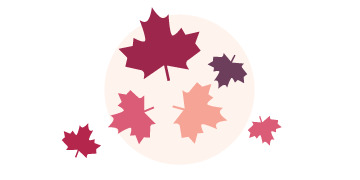
Where is it worth to go out for mushroom hunting? And when? And what should I know to do so? The simple answer: mushroom hunting is worthwhile everywhere in summer and autumn – but these 11 essential things you need to know to pick mushrooms.
Go for mushrooming! For all hunters and gatherers, gourmets and epicures, mushroom hunting is one of the best leisure activities in summer and autumn. Here you can find out when and where the most delicious edible mushrooms grow and what you should be sure to keep in mind. With which mushrooms should a mushroom newbie start and under which trees actually grow boletus?
1. What Are Mushrooms?
What a superfluous question? Sure: porcini, mushrooms and chanterelles are mushrooms! However, these well-known delicious edible mushrooms are only the visible fruiting bodies. The actual fungal organism, called mycelium, is a spider-web-like network that lives in foliage and needles, in wood and in the soil.
This is important for mushroom collecting: often the same mushrooms grow in the same places every year, because there the mycelium has the perfect conditions – this applies, for example, to porcini and morels!
2. When Do the Most Delicious Mushrooms Grow?
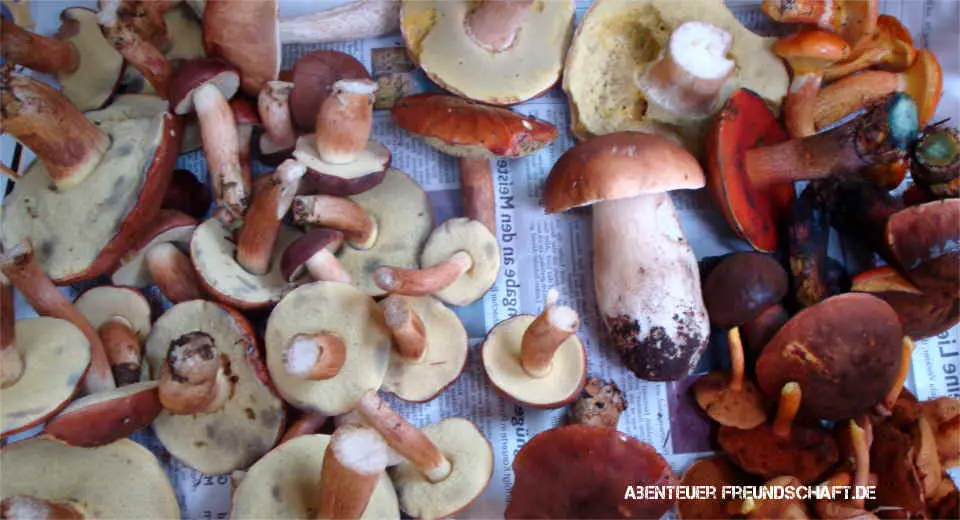
Summer and fall are peak season
As early as spring, mushroom season begins! Each type of mushroom grows at a certain time of year, so in September you can find spruce boletus but not morels. Around March, the March violets begin to bloom and with them grow the first edible mushrooms, such as the spruce cone ruffle. From April grow the morels hotly anticipated by gourmets and mushroom pickers – of them there are several species..
From July to October is the peak season for mushroom picking! During these months, most tubular and lamellar mushrooms grow. Especially for many large mushrooms, such as the various boletus species and the delicious parasol mushroom, the conditions are optimal!
But beware: during prolonged periods of fine weather in summer, the forest floor dries out due to the sun and the wind and the mushrooms do not grow: so it is not worth going into the forest then! Even in a rainy but cool summer mushrooms can grow sparsely – so observe the weather before picking mushrooms – warm and rainy is perfect!.
What many do not know: Even in winter you can collect mushrooms. At the first night frost from the end of October, the growth of lamellar and tubular mushrooms declines, but there are two edible mushroom species that are worth collecting: Oyster mushrooms and German Samtfußrüblinge.
3. Where Is It Worthwhile to Go Mushroom Hunting?
The best edible mushrooms grow not only in the dense forest! There are many high-quality edible mushrooms, which are most often found in meadows and pastures, in gardens under fruit trees, on compost heaps, along roadsides and in clearings. This is especially good news for city dwellers, because even in the city you can find porcini mushrooms and meadow mushrooms in parks!
Do not pick mushrooms in national parks, nature reserves and on private property. Also, do not collect mushrooms near roads and industrial areas, as they absorb heavy metals and pollutants. After Chernobyl in some parts of Germany, for example in Bavaria, is still warned about radioactive contamination of mushrooms – however, this is only questionable if you eat a mushroom meal every day.
4. 11 Rules for Mushroom Hunting
These 11 rules you should definitely follow!
- For the kitchen only collect mushrooms that you know for sure. Carefully determine! When in doubt, let the expert or mushroom advisory center determine!
- Collect only fully grown specimens, because not fully grown mushrooms are easily confused!
- Leave old specimens – you can recognize them by the soft cap, often they are maggoty!
- On the ground and wood growing safely cut off certain species with a knife. Must you still determine the mushroom, turn out, because at the base are often important features!
- Clean mushrooms in the forest and scrape off needles, leaves and soil residues there with a knife.
- To collect mushrooms you need an air-permeable container.
- Process mushrooms within 24 hours. Some can be frozen or dried.
- Leave mushrooms after the first frost!
- Do not collect protected species!
- Do not eat mushrooms raw, because you could get infected with the small fox tapeworm. Fry or cook well before eating!
- Due to pollution from busy roads and dog droppings near cities, only pick mushrooms in uncontaminated areas!
5. How Do I Harvest Mushrooms Properly?

Harvesting this red-legged bolete with a knife
Yet unidentified mushrooms you carefully turn completely out of the ground at the base of the stem. This is especially important because there are often characteristics at the base of the stem that are needed to clearly identify the mushroom! Undetermined mushrooms one collects in separate baskets.
A clearly and certainly determined mushroom one cuts off at the style base with the knife. Then one cleans I directly in the forest and removes foliage and humus remains before one puts the mushroom into its basket. If the mushroom feels spongy, you can cut it on the stem to see if it is infested with maggots..
Mushrooms that grow on tree stumps or wood, you cut with a sharp knife. On the ground growing mushrooms one turns to determine from the ground..
6. The Right Equipment for Mushroom Hunting
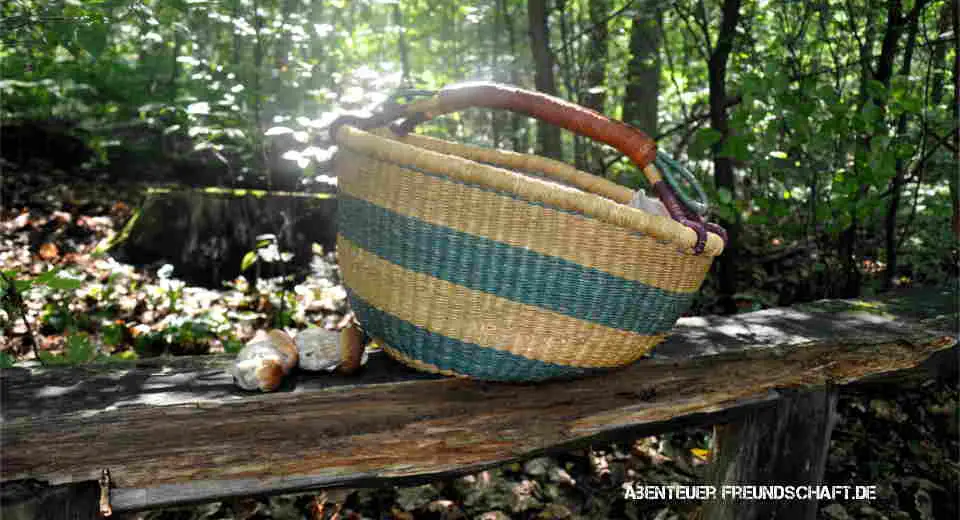
An air-permeable basket is perfect
For mushroom hunting, you need an air-permeable container for your mushroom haul. Woven baskets are ideal. You can line the inside of the basket with a layer of newspaper to keep it clean. Undetermined or poisonous mushrooms should be collected in a separate basket..
For harvesting, you should take a knife – retractable knives such as pocket knives are best..
Repellents and long pants protect against ticks. In summer, sturdy boots are also recommended, as ticks often sit in the meadow as well.
7. Hands Off Old Mushrooms!
Most mushroom poisoning in Germany comes not from the consumption of poisonous mushrooms but from old or incorrectly transported mushrooms. Old mushrooms are often spoiled and can lead to serious health problems. They can be recognized by the soft, spongy cap or mold. Also, the wrong transport in air-impermeable containers such as plastic bags accelerates the spoilage of mushrooms!
8. Never Eat Collected Mushrooms Raw!
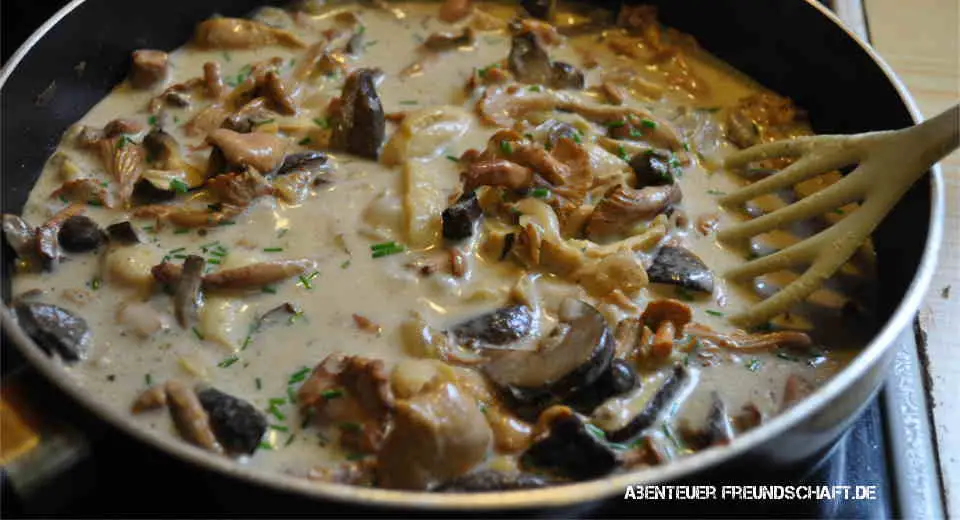
Delicious wild mushroom dish
Supermarket mushrooms taste delicious raw – so do porcini and some other types of mushrooms. Nevertheless, you should not eat any mushroom raw that you have collected yourself. One reason for this is the risk of transmission of the small fox tapeworm. Also, some mushrooms are indeed poisonous raw, but cooked delicious edible mushrooms such as the pearl mushroom, which according to the ancient army commander Julius Caesar tastes even more delicious than the boletus!
All self-collected mushrooms should be ca. 15 minutes heat – whether fry or boil.
9. Determine Mushrooms: But How?
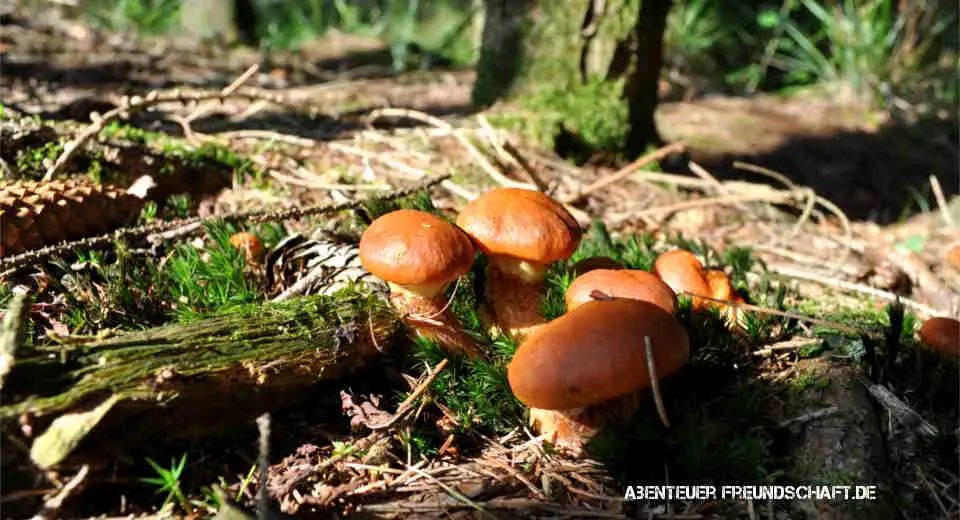
Determining mushrooms starts in the forest
In Germany there are about 14,400 different kinds of mushrooms! Even the greatest mycologists (mushroom researchers) do not recognize all mushrooms without the help of identification books and other experts. Practiced mushroom pickers collect for consumption only species they know for sure. The uncertain candidates are in the extra basket and are determined at home exactly and assigned..
The determination begins but already on site! Under which tree with which other fungi and plants was the fungus growing? On wet or sandy, dry, chalky soil, on soil, humus, manure, or wood? What do the younger and older mushroom specimens look like there? It is best to take photos of the mushroom at the site, as well as immediately after harvesting.
At home one examines the mushroom carefully according to many characteristics with the help of the literature until one has determined it beyond doubt. Nevertheless, as a mushroom newbie, you should eat the mushroom only if an expert has approved it for consumption! Ideally, you ask a mushroom professional from a mushroom consultation center to be sure.
These are exemplary characteristics for the determination:
- Size: height of the fruiting body, stem length and thickness, cap diameter
- Hat top: shape, size, color, surface texture (bulbous, spherical, pointed, slimy, sticky, dry, cracked, edges curled…)
- Hat underside: lamellae, tubes ridges, spines, pores, spores (thick, thin, wide, color, spore production strong or weak? Size and shape?..)
- Stalk: Shape stalk section, shape, surface, ring, shape stalk base (bulbous, bulbous, rooting, smooth, scaled, reticulated, stalk base bulbous, with “sheath” (skin-like sheath around the stalk base), rounded, pointed…)
- Flesh: color, odor, taste, consistency, discoloration, milky juice comes out (friable, brittle, firm, bluish, soft, woody…)
In addition to very good identification books for mushroom hunting, such as the great Kosmos mushroom guide, which I use myself, there are also recently mushroom identification apps. But beware! These apps can, for example, no smell or taste test and are not a substitute for determination books and experts!
10. Mushroom Picking for Newbies!
There are mushrooms in Germany that even beginners can collect without hesitation! Because with these mushrooms there is no danger of confusion with a poisonous doppelganger.
Tubular Mushrooms or Tube Fungi
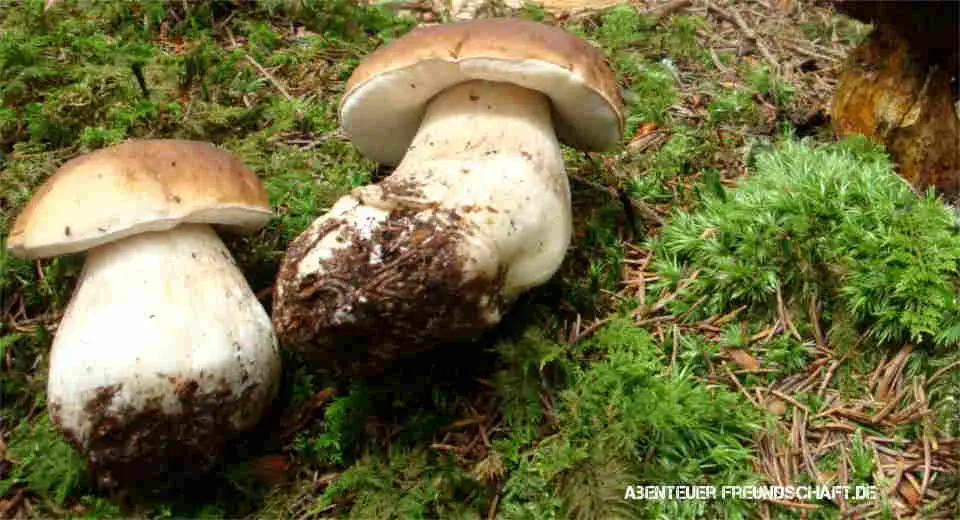
The boletus is a tubular mushroom
The best introduction to mushroom science are tubular mushrooms. This type of mushroom has a clearly separated stalk and cap. The underside of the cap consists of numerous closely spaced tubes that look like a sponge. The most delicious tubular mushrooms are boletus, butter mushrooms, chestnuts, birch mushrooms and larch boletus.
Tubular mushrooms with white or pale yellow hats can be confused with the non-toxic but inedible fair-legged boletus. It is quite important to recognize the “Gallenröhrling” with its pink tube mouths and a brown net on the stalk, which tastes enormously bitter during the taste test: the “Gallenröhrling” is not poisonous, but spoils the complete mushroom meal with its bilious taste and can easily be confused with the porcini!
A beginner on mushroom hunting should keep their hands off tubular mushrooms with red tubes, because this distinguishes the only truly poisonous tubular mushroom, the satanic mushroom.
Chanterelles
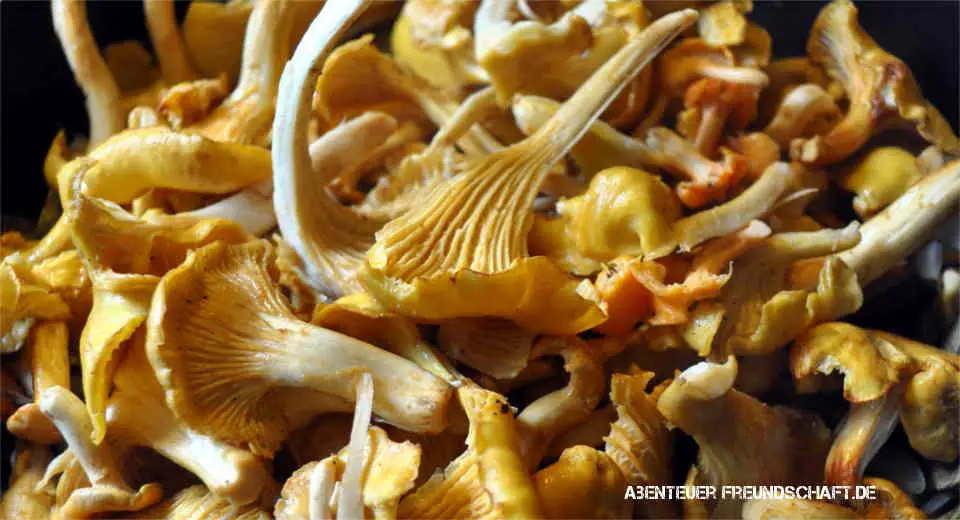
The chanterelle
The most famous “Leistling” is the chanterelle. The great news for newbies in mushroom picking: there is no danger of confusion with a poisonous doppelganger! Leistlinge have under the hat ledges, which run long down the stem, often forked and veiny connected at the base..
They differ from the lamellar mushrooms by more densely standing lamellae, which are fragile and easily separable from the cap. The only similar looking mushroom is the bright orange, non-poisonous false chanterelle, the consumption of which in large quantities can cause gastrointestinal problems. The distinction lamella – ledge is easy to learn!
11. Extra Knowledge! These Trees and Mushrooms Love Each Other!
Many mushrooms live in a community (symbiosis) with certain trees and plants. When hunting mushrooms, it is therefore advantageous to bring a basic knowledge of forests, trees, shrubs and plants.
One mushroom grows only under a certain type of tree, while another is not picky. Here you will find compact the most important facts about the most common trees and their most delicious and most toxic mycorrhizal fungi – the fungi with which they live in symbiosis. With this basic knowledge, you already know more than 90% of other mushroom pickers! The following fungi grow with a very high probability under the respective trees..
Coniferous Trees
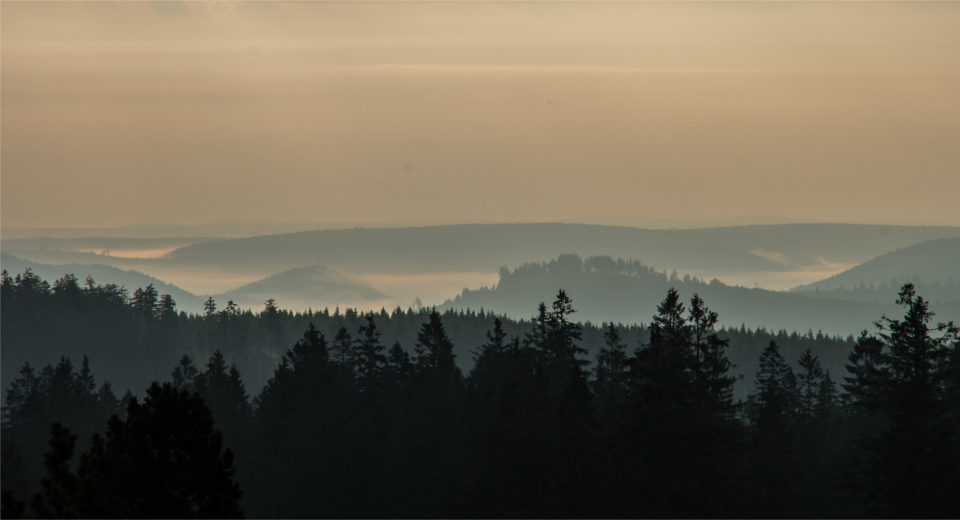
Morning in the Black Forest by Black Value Nature Photography at CC BY 2.0
- Spruce: Spruce is a popular and very common forest tree because it grows fast and straight. The good news for mushroom picking: many fungi live in symbiosis with it. Important edible mushrooms: Spruce boletus, chestnut boletus, pearl mushroom – Poisonous mushrooms: Toadstool, cone-hooded bulbous mushroom, Moser’s Satan’s bolet, panther mushroom
- Wood pine: Wood pine grows on wet bog soil and on dry limestone soils. They can be recognized by the paired needles and their growth. Edible mushrooms: pine boletus / red-hooded boletus, curly hen, noble irritant, butter mushroom, ringless butter mushroom, granule boletus /schmerling
- Larch: Edible mushrooms: gold boletus, gray larch boletus, russet larch boletus
Deciduous Trees
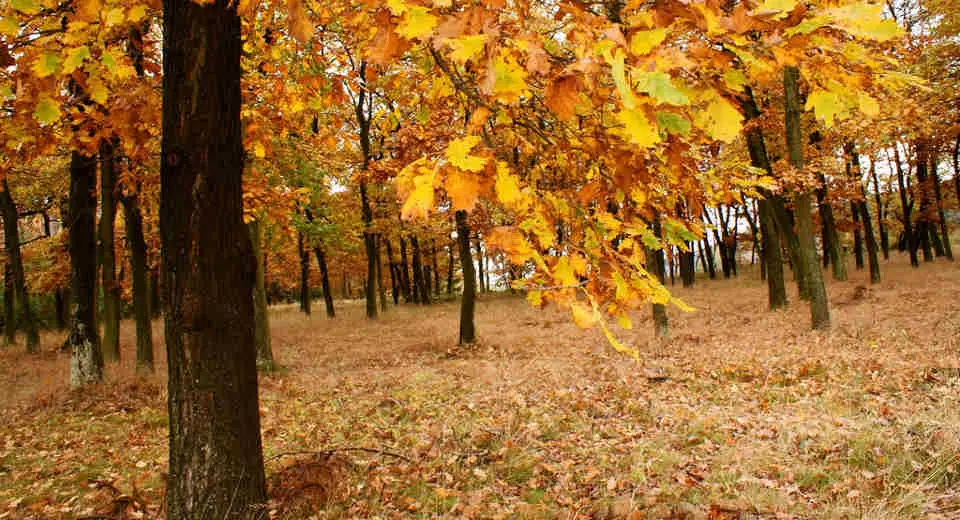
Deciduous forest by Mario Spann at CC BY-SA 2.0
- Red beech: Among deciduous trees, red beech is the mycorizha partner with the most fungal species. Eating mushroom: Black-hooded boletus (bronze boletus), silver boletus, stock sponge on the tree stumps Poisonous: Satan’s boletus, cone-hooded bulbous-leaved mushroom
- Oak: Under oaks grow a lot of boletus – many of them are delicious edible mushrooms! Eating mushrooms: Summer Boletus, Edible Dauber Poisonous mushrooms: Green Tuberous Mushroom, Cone-hooded Tuberous Mushroom
- Birch: edible mushrooms: birch boletus, birch red cap, birch mushroom Poisonous: toadstool, cone-hooded tuberous-leaf fungus
Tip: Also check out my wild mushroom recipes and tips on how to prepare them. From dried porcini mushrooms you can also make a porcini mushroom risotto mix in a jar, with my friends it was enormously well received.
You’ll also find plenty of tips for activities with friends, couples and family. If you don’t want to miss any more of our ises, just follow us on Facebook and Instagram and subscribe to our newsletter 😉
*There are affiliate links in this article. That means, if you order a product from amazon through one of these links, Abenteuer Freundschaft gets a small commission without the product becoming more expensive for you.
Similar Posts
Advertisement
